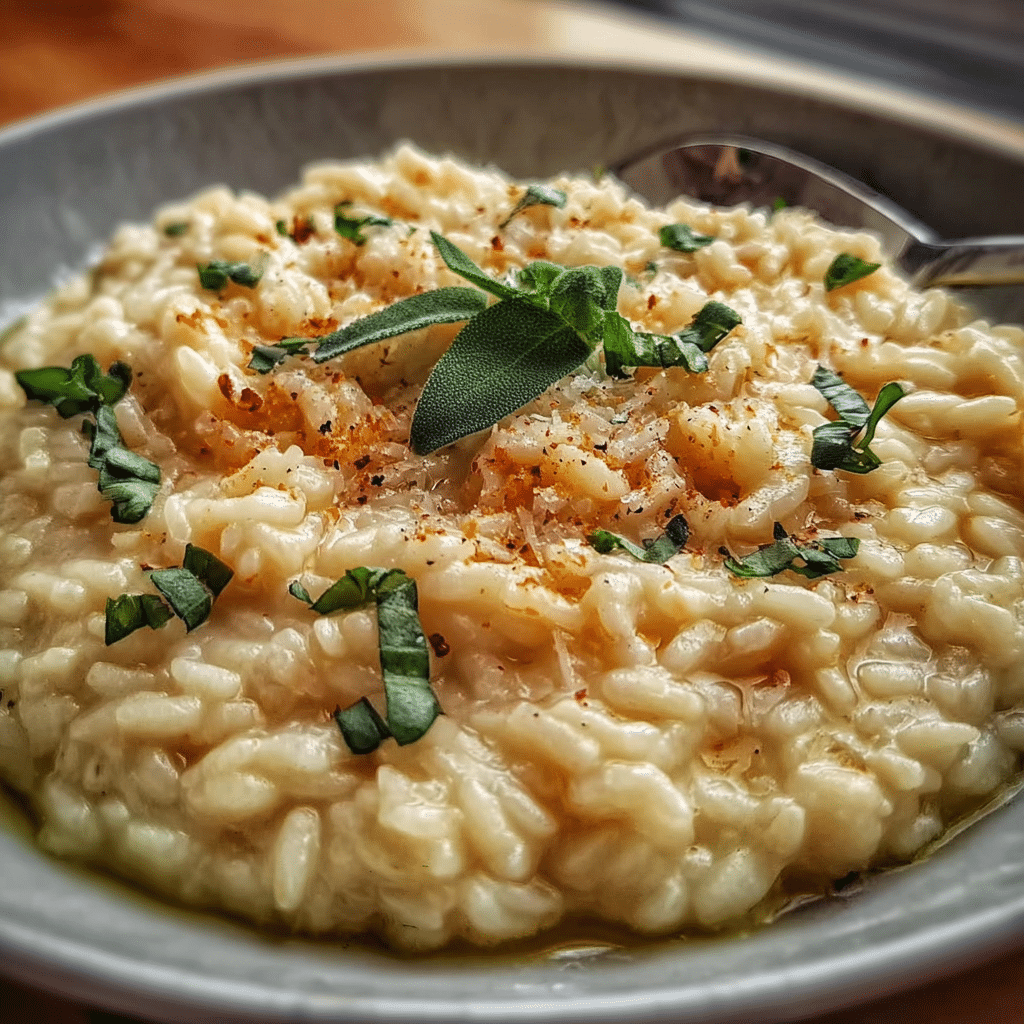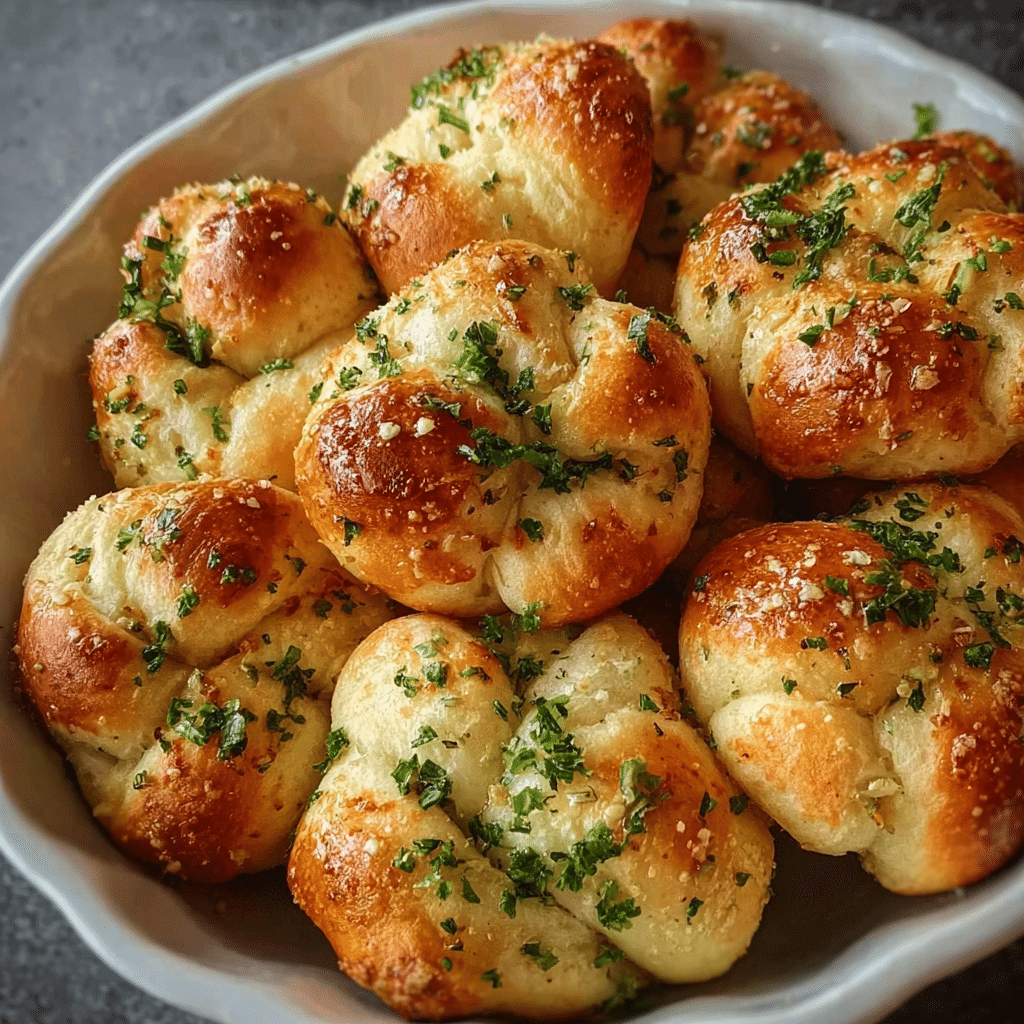Butternut squash & sage pasta is not just a dish; it’s a delightful experience that marries earthy flavors with creamy textures. I still remember the first time I stumbled upon this enchanting recipe in a quaint little café tucked away in the heart of a bustling city. The café was known for its seasonal dishes, and as I flipped through the menu, the words “butternut squash & sage” leaped off the page and captured my curiosity. I had never tasted such a combination before, and the thought of sweet, roasted butternut squash paired with the aromatic essence of sage sparked my imagination.

As I took my first bite, I was transported to a warm autumn evening—each forkful felt like a cozy hug that wrapped around me. The sweetness of the butternut squash complemented the savory notes of the sage, creating a harmonious balance that danced on my palate. It was in that moment I knew I had to recreate this dish in my own kitchen. Over the years, I’ve made numerous variations, each time adding my own twist while staying true to the essence of the original recipe. This dish has become a staple in my home, especially during the cooler months when comfort food is an absolute necessity.
The Story Behind This Recipe
Butternut squash & sage pasta has roots in Italian cuisine, often celebrated for its emphasis on simplicity and fresh ingredients. The dish embodies the essence of autumn, a time when butternut squash is in season and readily available at local markets. The tradition of using seasonal produce is a hallmark of Italian cooking, which is all about celebrating the harvest and making the most of what nature provides. This dish, with its rich flavors and vibrant colors, is not only a feast for the taste buds but also for the eyes.
What makes butternut squash & sage pasta particularly special is its versatility. Unlike many traditional pasta dishes that can be heavy and overwhelming, this recipe offers a light yet satisfying option that is perfect for busy families. It can be whipped up in about 30 minutes, making it an ideal choice for weeknight dinners when time is of the essence. The creamy sauce, created from puréed butternut squash, can be prepared in advance, and the dish can easily be adjusted to suit various dietary preferences, whether you’re vegan, gluten-free, or simply looking to incorporate more vegetables into your diet.
As the leaves start to change colors and the air turns crisp, this dish becomes a go-to comfort meal. The vibrant orange hue of the butternut squash is reminiscent of autumn sunsets, and the earthy flavors evoke the essence of cozy evenings spent with loved ones. Each time I prepare this dish, it stirs a sense of nostalgia and warmth, reminding me of family gatherings and shared moments around the dinner table. It’s a recipe that not only nourishes the body but also feeds the soul.
In this guide, you’ll learn everything you need to know about making the perfect butternut squash & sage pasta. From selecting the freshest ingredients to mastering the technique of creating a silky sauce, I’ll walk you through each step, sharing tips and tricks I’ve picked up along the way. Whether you’re a seasoned cook or a novice in the kitchen, this recipe is sure to become a beloved favorite in your home.
Why You’ll Love This Dish
Butternut squash & sage pasta is more than just a meal; it is an invitation to gather around the table, to share stories, and to celebrate the changing seasons. The rich flavors, stunning presentation, and ease of preparation make it a dish that will impress family and friends alike. I can’t wait to share this culinary journey with you, as we explore the magic of butternut squash & sage pasta together.
The Rich History and Cultural Significance of butternut squash &
Butternut squash & sage pasta has a rich history that is deeply rooted in the culinary traditions of Italy. This dish exemplifies the Italian philosophy of using fresh, seasonal ingredients to create simple yet flavorful meals. Butternut squash itself is a member of the gourd family, believed to have originated in Central and South America thousands of years ago. It was later introduced to Europe during the Columbian Exchange, where it quickly gained popularity due to its versatility and nutritional benefits.
Origins and History
The specific combination of butternut squash & sage can be traced back to the rustic kitchens of Northern Italy, where hearty dishes are celebrated. The use of sage, an aromatic herb with a strong, earthy flavor, is a hallmark of Italian cooking, often featured in dishes like pasta sauces, roasts, and stuffing. The pairing of butternut squash & sage became popular as chefs began to explore the natural sweetness of the squash and the savory depth of sage, creating a flavor profile that is both comforting and sophisticated.
Over the years, the dish has evolved, with various regions in Italy adding their own flair. In Tuscany, for instance, you might find butternut squash & sage pasta served with a drizzle of rich olive oil and a sprinkle of local pecorino cheese. Meanwhile, in the north, it may be combined with a luxurious cream sauce that enhances the squash’s natural sweetness. Each variation tells a story of regional ingredients and cooking styles, making the dish a true reflection of Italy’s diverse culinary landscape.
Cultural Significance
Butternut squash & sage pasta is often associated with autumn and harvest festivals, where communities come together to celebrate the bounty of the season. This dish is frequently served during family gatherings and festive occasions, symbolizing warmth, comfort, and togetherness. It is a reminder of the importance of seasonal cooking and the joy of sharing meals with loved ones. In many Italian households, the preparation of this pasta dish becomes a family affair, with each member contributing to the process, from peeling the squash to stirring the sauce.
The dish has also gained traction in modern cuisine, with renowned chefs and restaurants embracing its flavors and creating innovative takes on the classic recipe. Chefs like Lidia Bastianich and Massimo Bottura have featured variations of butternut squash & sage pasta on their menus, showcasing the dish’s enduring appeal. It has also found its way into home kitchens around the world, thanks to its adaptability and the increasing interest in plant-based diets.
Nutritional Benefits
Butternut squash is not only delicious but also packed with nutritional benefits, making it an excellent choice for health-conscious eaters. Rich in vitamins A and C, it supports immune function and skin health while providing antioxidants that help combat oxidative stress. Additionally, butternut squash is high in fiber, promoting digestive health and helping to maintain a healthy weight. The inclusion of sage adds to the dish’s health profile; this herb is known for its anti-inflammatory properties and potential cognitive benefits.
As you explore the history and significance of butternut squash & sage pasta, you’ll come to appreciate not only the flavors but also the culture that surrounds this beloved dish. It’s a culinary journey that connects us to the past while inviting us to create new memories in our own kitchens. So, roll up your sleeves, and let’s dive into the wonderful world of butternut squash & sage pasta!
Essential Ingredients for Perfect butternut squash &
When it comes to creating a delightful dish like butternut squash & sage pasta, the ingredients you choose play a pivotal role in the final outcome. Each component brings its unique flavor and texture, contributing to a dish that not only pleases the palate but also nourishes the body. Let’s dive into the essential ingredients that will help you achieve a perfect butternut squash & sage pasta.
Essential Ingredients
- Butternut Squash: 1 medium-sized, peeled and cubed (about 3 cups)
- Fresh Sage: 1/4 cup, chopped, plus whole leaves for garnish
- Pasta: 12 ounces of your choice (I recommend farfalle or fettuccine for their ability to hold sauce well)
- Olive Oil: 3 tablespoons for roasting and sautéing
- Garlic: 3 cloves, minced
- Vegetable Broth: 1 cup (or chicken broth for a non-vegetarian version)
- Parmesan Cheese: 1/2 cup, freshly grated, plus more for serving
- Salt and Pepper: To taste
- Red Pepper Flakes: Optional, for a touch of heat
Each of these ingredients plays a vital role in bringing the dish together. The butternut squash, with its sweet, nutty flavor, serves as the star of the show. Roasting it enhances its natural sweetness, and the texture becomes creamy, complementing the pasta beautifully. Fresh sage adds an earthy aroma and complements the squash perfectly. It’s an essential herb in this dish, with its flavor deepening as it cooks.
Pasta is the vehicle that carries all these delightful flavors. I suggest using a pasta shape that can catch the sauce well, like farfalle or fettuccine. Olive oil is crucial for roasting the squash and sautéing the garlic, providing a rich base that enhances the overall flavor. Garlic adds depth and aroma, while vegetable or chicken broth adds moisture and a savory depth to the dish.
Parmesan cheese adds a salty, umami flavor that elevates the dish. It’s best when freshly grated, as pre-packaged cheese can sometimes lack flavor. Finally, a sprinkle of red pepper flakes can introduce a delightful hint of heat, balancing the sweetness of the squash.
Print
Butternut Squash & Sage Pasta Recipe
Ingredients
- 2 cups cubed butternut squash
- 1 tablespoon extra-virgin olive oil
- 1 tablespoon butter (or vegan butter or more olive oil)
- 1 small shallot, sliced
- ¼ cup chopped sage leaves
- ¼ cup chopped walnuts
- ½ cup cooked chickpeas
- 1–2 garlic cloves, finely chopped
- Big squeeze of lemon
- Splash balsamic vinegar
- 4–6 ounces spaghetti or linguine (and save some pasta water)
- A few handfuls of chopped spinach (or kale or chard)
- ½ cup chopped parsley
- Grated pecorino cheese (optional)
- Sea salt and freshly ground black pepper
Instructions
- Preheat the oven to 350 degrees. Roast the butternut squash cubes with a little olive oil, salt, and pepper for about 20 minutes, or until they’re soft and mostly cooked through. Remove from the oven and set aside.
- Cook pasta in salty water until al dente and reserve at least 1 cup of the starchy pasta water.
- Meanwhile, heat a medium skillet over medium heat. Add the olive oil and butter, then add the shallot and cook until translucent. Add the chopped sage and cook for another 30 seconds, then add the walnuts, chickpeas, butternut squash cubes, garlic, salt, and pepper. Cook until the chickpeas and squash brown a bit (but before the garlic burns).
- Add a big squeeze of lemon and a good splash of balsamic and stir.
- Add the cooked pasta and spinach. Use tongs to gently toss the pasta with everything in the pan, allowing the greens to wilt. Add pasta water to help loosen it (I used about ¼ cup).
- Add some grated pecorino at this step if you wish.
- Remove from heat, then stir in the chopped parsley.
- Taste and adjust seasonings and serve with extra grated cheese.
Shopping Tips
When shopping for ingredients, quality is key. For butternut squash, look for ones that feel heavy for their size, with a firm skin and minimal blemishes. The color should be a deep, even tan. If you can find them, choose organic vegetables, as they often have richer flavors and fewer pesticides. Fresh sage should be bright green and fragrant, with no signs of wilting. For pasta, I recommend choosing a brand made with durum wheat for the best texture.
In terms of seasonal availability, butternut squash is typically harvested in the fall, making it a great choice for autumn-inspired dishes. You can often find it at local farmers’ markets, where you can also ask about the best varieties for roasting.
Substitutions and Alternatives
If you’re looking for substitutions due to dietary restrictions or personal preferences, there are many options. For a gluten-free version, you can use gluten-free pasta such as brown rice or quinoa pasta. If you’re vegan, simply omit the Parmesan cheese or use a plant-based cheese alternative. Instead of sage, try using thyme or rosemary, which can also add a wonderful aroma and flavor to the dish.
Storage is another essential consideration. Butternut squash can be stored in a cool, dark place for several weeks. Once cut, it should be wrapped well and refrigerated, where it will last for about a week. Fresh sage can be stored in the refrigerator wrapped in a damp paper towel to keep it fresh for several days.
For cost-saving tips, consider buying butternut squash in bulk during the fall, when the prices are typically lower. You can roast and freeze any extra squash for future meals. Also, buying pasta in larger quantities can often save money in the long run.
Finally, weighing the benefits of organic versus conventional ingredients is crucial. While organic butternut squash and sage might cost a bit more, they often have a more robust flavor and are free from harmful pesticides, making them worth the investment for this delicious butternut squash & sage pasta.
Detailed Step-by-Step butternut squash & Cooking Instructions
Now that we have gathered all the essential ingredients for our butternut squash & sage pasta, it’s time to transform them into a culinary masterpiece. Cooking this dish is not only about following a recipe; it’s about embracing the process and enjoying each step. Let’s break down the cooking instructions into clear, manageable steps to ensure you create a dish that’s bursting with flavor!
Preparation Steps
- Preheat the Oven: Start by preheating your oven to 425°F (220°C). A hot oven is crucial for roasting the butternut squash to perfection, allowing it to caramelize and develop a rich flavor.
- Prepare the Butternut Squash: Carefully peel the butternut squash using a sharp peeler or knife. Cut it in half lengthwise and scoop out the seeds. Then, chop the squash into uniform cubes, about 1 inch in size. Uniformity is important for even cooking.
- Season the Squash: In a large mixing bowl, toss the cubed butternut squash with 2 tablespoons of olive oil, salt, and pepper. Make sure each piece is well-coated; this will enhance the flavor as it roasts.
- Roast the Squash: Spread the seasoned squash in a single layer on a baking sheet lined with parchment paper. Roast for about 25-30 minutes, flipping halfway through, until the squash is tender and caramelized. The edges should be golden brown and slightly crispy.
Cooking Process
- Cook the Pasta: While the squash is roasting, bring a large pot of salted water to a boil. Add the pasta and cook according to the package instructions until al dente. Reserve about 1 cup of pasta water, then drain the pasta and set aside.
- Sauté the Aromatics: In a large skillet, heat the remaining tablespoon of olive oil over medium heat. Add the minced garlic and sauté for about 1-2 minutes until fragrant, but be careful not to let it brown, as burnt garlic can impart a bitter flavor.
- Add the Broth: Pour in the vegetable broth and bring it to a simmer. This will create a lovely sauce that will coat your pasta beautifully. If you want a richer flavor, you can add a splash of white wine at this stage.
- Incorporate the Squash: Once the butternut squash is roasted, add it to the skillet along with the chopped sage. Stir gently to combine, ensuring the squash is evenly distributed throughout.
Final Assembly
- Combine the Pasta: Add the cooked pasta to the skillet, tossing everything together to combine. If the mixture seems dry, gradually add reserved pasta water until you reach your desired consistency. The sauce should cling to the pasta without being too watery.
- Finish with Cheese and Seasoning: Stir in the grated Parmesan cheese, mixing until melted and creamy. Taste and adjust seasoning with more salt, pepper, or red pepper flakes if desired.
- Garnish and Serve: Serve the butternut squash & sage pasta hot, garnished with additional Parmesan and whole sage leaves for a pop of color. Enjoy this comforting dish with a side of crusty bread and a simple salad for a complete meal.
Cooking is as much about the journey as it is about the destination. Throughout this process, take a moment to enjoy the aromas wafting from your kitchen and the vibrant colors of your ingredients. This butternut squash & sage pasta isn’t just a meal; it’s an experience that brings warmth and joy to your table. Happy cooking!
Professional Tips and Techniques for butternut squash &
When it comes to creating a delightful dish of butternut squash & sage pasta, the journey starts well before the first noodle hits the boiling water. It involves a dance between the flavors, techniques, and artistry that can elevate your dish from ordinary to extraordinary. As someone who has spent countless evenings experimenting with different pasta recipes, I’ve gathered some professional tips and techniques that will help you master this comforting dish.
Professional Techniques
One of the first things to understand about working with butternut squash & is the preparation of the squash itself. This wonderful vegetable has a tough skin, making it somewhat challenging to peel. A professional technique I’ve learned is to roast the squash whole for about 30 minutes; this softens the skin, making it easier to peel and cube afterwards. Not only does roasting enhance the natural sweetness of the squash, but it also allows the flavors to deepen.
Once your squash is peeled and diced, the next step involves cooking it to perfection. You can either roast it in the oven or sauté it on the stovetop. I prefer roasting because it caramelizes the natural sugars, giving a richer flavor profile. Toss the cubes in a little olive oil, salt, and pepper, and roast at 400°F (200°C) until tender and golden. This will typically take about 25-30 minutes.
Now, let’s talk about the pasta. For butternut squash & sage pasta, using fresh pasta can make a significant difference in texture and flavor. You can either make your own or buy it from a local market. If you’re venturing into making your own, using a pasta machine can help you achieve that perfect thinness that holds the sauce beautifully. Remember to dust your pasta with flour to prevent sticking.

Troubleshooting Guide
Even the best chefs face challenges in the kitchen. One common problem when making butternut squash & sage pasta is the texture of the sauce. If your sauce is too thick, thin it out with a little pasta water or vegetable broth. Conversely, if it’s too thin, let it simmer on low heat to reduce and thicken. A hint of cream can also help achieve a luxurious consistency.
Another issue could arise with the flavors. If your dish tastes too bland, consider adding a splash of lemon juice or zest. The acidity can brighten the entire dish and balance the sweetness of the butternut squash &. Additionally, if you find that the sage flavor is overpowering, you can dilute it by adding more cream or butter to the sauce.
Presentation Tips
Presentation can truly elevate your butternut squash & sage pasta experience. A simple yet effective way to plate this dish is to twirl the pasta into a nest shape using a fork and spoon. Place it in the center of a wide, shallow bowl, allowing the sauce to pool around it. To add vibrancy, you can garnish with freshly grated Parmesan cheese, crispy sage leaves, and a drizzle of high-quality olive oil.
For beverage pairings, a light white wine, such as a Sauvignon Blanc or a Pinot Grigio, complements the sweetness of the butternut squash & while balancing the richness of the sauce. If you’re looking for a non-alcoholic option, consider serving a sparkling water with a slice of lemon or a light herbal tea.
Make-ahead strategies can also be a lifesaver on busy weeknights. You can roast the butternut squash & in advance and store it in the fridge for up to three days. The sauce can be prepared ahead of time as well; just remember to reheat it gently on low heat to maintain its creamy texture. If scaling the recipe, simply double or halve the amounts of each ingredient, keeping in mind that cooking times may vary slightly.
In conclusion, mastering butternut squash & sage pasta involves a blend of professional techniques, troubleshooting skills, and a dash of creativity. With these tips, you’ll not only create a dish that is visually stunning but also a flavor bomb that will have everyone coming back for seconds.
Creative Variations and Adaptations of butternut squash &
When you think about butternut squash & sage pasta, it’s easy to fall into the comfort zone of the classic recipe. However, there’s a whole world of creative variations and adaptations waiting for you to explore. As someone who loves to experiment in the kitchen, I can assure you that this dish is incredibly versatile and can be tailored to suit any palate or dietary preference.
Seasonal Variations
Let’s start with seasonal variations. Butternut squash & is a fall and winter staple, but you can easily incorporate other seasonal ingredients to brighten your dish throughout the year. For instance, in the spring, consider adding fresh peas or asparagus to the mix. Their vibrant colors and flavors pair excellently with the sweetness of the squash &, creating a fresh and lively dish. In the summer, you can swap out the sage for basil or mint, offering a completely different flavor profile while still maintaining that delightful butternut squash & base.
Moreover, if you want a heartier meal in the winter months, adding roasted Brussels sprouts or kale can provide additional nutrients and flavor. These greens not only add a delightful crunch but also balance the dish’s sweetness.
Dietary Adaptations
Adapting butternut squash & sage pasta to accommodate dietary restrictions is also a breeze. For those following a vegan diet, you can substitute traditional pasta with gluten-free options or vegetable-based noodles like zucchini or spaghetti squash. Use cashew cream or coconut milk in place of heavy cream to maintain that creamy texture without the dairy. The flavors of butternut squash & and sage will still shine through beautifully, ensuring that everyone at the table can enjoy this dish.
If you’re looking for a keto-friendly option, consider using spiralized vegetables or even shirataki noodles. These alternatives are low in carbs and will soak up the flavors of the butternut squash & sage sauce while keeping your meal light and satisfying. Just be sure to maintain a balance of flavors by adding nuts or seeds for a little crunch.
Creative Twists
Now let’s dive into some creative twists that can take your butternut squash & sage pasta to a whole new level. Have you ever considered making a butternut squash & sage pesto? By blending roasted butternut squash & with fresh sage, garlic, nuts, and olive oil, you create a creamy, flavorful sauce that can be tossed with any pasta. This twist not only enhances the original flavors but also adds a unique texture, making your dish stand out.
Another fun idea is to incorporate different spices. While sage is traditional, experimenting with spices like smoked paprika, nutmeg, or even a hint of cayenne can add depth to your dish. Just remember to start with a small amount and adjust according to your taste.
Leftover transformation is yet another fantastic way to enjoy butternut squash & sage pasta. If you find yourself with some leftovers, consider turning them into a baked casserole. Combine the pasta with some cheese, breadcrumbs, and additional veggies, then bake until bubbly. The result is a comforting, warm dish that feels like an entirely new meal.
In conclusion, the world of butternut squash & sage pasta is vast and exciting. Whether you’re looking to switch up the flavors with seasonal ingredients, adapt the recipe for dietary needs, or simply get creative with your cooking, there’s no limit to what you can do with this versatile dish. Embrace the journey of experimentation, and you’ll find that each variation brings something new and delicious to your table.
Storage, Reheating, and Meal Prep for butternut squash &
When it comes to making a delicious dish like butternut squash & sage pasta, knowing how to properly store, reheat, and meal prep your ingredients and leftovers can significantly enhance your culinary experience. Having spent countless evenings experimenting with butternut squash in various recipes, I’ve learned some invaluable tips that I’m excited to share with you. From storage containers that keep your ingredients fresh to reheating techniques that preserve flavor, this guide will cover all things storage for butternut squash &.
Short-term Storage
After you’ve whipped up your butternut squash & sage pasta, you may find yourself with leftovers or perhaps you need to store some prepped ingredients. The key to keeping your pasta and its components fresh lies in the right storage methods. For short-term storage, the refrigerator is your best friend.
First, let’s talk about the pasta itself. Make sure to let your butternut squash & sage pasta cool down to room temperature before placing it in an airtight container. This step is crucial because putting hot food directly into the fridge can raise the overall temperature inside, potentially compromising food safety. Once cooled, transfer your pasta into a container that is not only airtight but also made from glass or high-quality plastic. I prefer glass containers as they don’t absorb odors and are microwave-safe.
If you’ve prepared separate components, such as roasted butternut squash or a sage-infused sauce, store them in separate containers. This not only helps in reheating but also maintains the texture of each component. Properly stored in the refrigerator, your butternut squash & components can last for about 3 to 5 days. Always label your containers with the date, so you know when to enjoy them!
Freezing and Long-term Storage
What if you’ve made a big batch of butternut squash & sage pasta and want to save some for a later date? Freezing is an excellent option! To freeze your pasta, follow the same cooling procedure as before. Once cooled, portion out the pasta into freezer-safe containers or resealable freezer bags. I recommend using bags for easier storage and to save space in your freezer. Squeeze out as much air as possible before sealing to prevent freezer burn.
For the best quality, aim to consume your frozen pasta within three months. Although it will remain safe to eat beyond that timeframe, the taste and texture may begin to degrade. When it comes to freezing butternut squash, you can also roast and cube it before freezing. Make sure to blanch it beforehand to preserve its color and nutrients, which involves briefly boiling the squash and then placing it in an ice bath.
Remember, when you’re ready to use your frozen butternut squash & or pasta, it’s best to thaw them in the refrigerator overnight. This gradual thawing helps maintain the quality of the ingredients. If you’re in a hurry, you can also reheat directly from frozen, but adjust your cooking time accordingly.

Reheating Best Practices
Reheating your butternut squash & sage pasta requires a little finesse to ensure you don’t end up with mushy noodles or bland flavors. The microwave is convenient, but it can dry out your pasta if not done correctly. To reheat in the microwave, add a splash of water or broth into the container before covering it. This will create steam and help keep your pasta moist.
Alternatively, you can reheat your pasta on the stovetop. Simply add the pasta and sauce to a skillet over medium-low heat. Add a little olive oil or butter for added flavor and to prevent sticking. Stir frequently until heated through. I find that this method allows for better flavor retention as you can easily incorporate more seasoning if needed.
When reheating, always check the temperature. Food should be heated to 165°F (74°C) to ensure it is safe to eat. If you’ve stored your roasted butternut squash separately, you can reheat it in the oven or microwave, depending on your preference. Just remember not to overcook, as you want to retain that lovely texture.
In conclusion, mastering the storage, reheating, and meal prep strategies for butternut squash & sage pasta is essential for any home cook. These techniques not only prolong the shelf life of your ingredients but also enhance your overall cooking experience. With a little care and attention, you can enjoy your delicious pasta for days to come!
Nutritional Benefits and Health Information
As a food lover and home cook, I’ve often marveled at how certain ingredients not only elevate a dish but also provide incredible health benefits. When it comes to butternut squash & sage pasta, the nutritional advantages are plentiful, making it not just a delicious meal but a wholesome one too. In this section, we’ll explore the nutritional profile, health benefits, and dietary considerations that accompany this vibrant dish.
Nutritional Profile
Let’s start by breaking down the ingredients of butternut squash & sage pasta to understand its nutritional content. Butternut squash, the star of the show, is packed with vitamins A and C, fiber, and essential minerals. Just a one-cup serving of cooked butternut squash contains approximately:
- Calories: 82
- Carbohydrates: 22 grams
- Fiber: 6 grams
- Protein: 2 grams
- Fat: 0.2 grams
- Vitamin A: 457% of the Daily Value (DV)
- Vitamin C: 52% of the DV
- Potassium: 16% of the DV
When combined with whole wheat or gluten-free pasta, the dish becomes even more nutritionally balanced, providing complex carbohydrates for sustained energy, as well as additional fiber and protein. Sage, while not a primary ingredient, adds its own unique benefits, including antioxidants and anti-inflammatory properties.
Health Benefits
The health benefits of consuming butternut squash & sage pasta go beyond just satisfying your hunger. The high levels of beta-carotene found in butternut squash are converted into vitamin A in the body, supporting eye health and boosting the immune system. Additionally, the fiber content aids in digestion and helps maintain a healthy gut.
Including sage in your dish not only elevates the flavor but also offers potential health benefits. This aromatic herb has been linked to improved brain function, and its anti-inflammatory properties can help alleviate symptoms of chronic conditions. Plus, the combination of flavors from butternut squash and sage creates a comforting meal that is perfect for cozy dinners.
Dietary Considerations
When preparing butternut squash & sage pasta, it’s essential to consider dietary restrictions and preferences. This dish is naturally gluten-free if you opt for gluten-free pasta, making it suitable for those with gluten sensitivities. Additionally, it can easily be made vegan by substituting traditional cheese with plant-based alternatives or omitting it altogether.
For those watching their calorie intake, portion control can be a helpful strategy. The nutrient density of the ingredients means you can enjoy a hearty serving without overindulging. Pairing your pasta with a fresh green salad can add extra nutrients while keeping the meal light.
In comparison to similar dishes, butternut squash & sage pasta stands out for its rich flavor profile and health benefits. Many traditional pasta dishes are heavy on cream and cheese, which can add unnecessary calories and fat. By focusing on wholesome ingredients, this dish offers a lighter alternative without sacrificing taste.
In summary, the nutritional benefits of butternut squash & sage pasta make it a fantastic choice for anyone looking to enjoy a delicious and healthy meal. With its rich array of vitamins, minerals, and fiber, this dish is not only satisfying but also a smart addition to your dining repertoire. Whether you’re enjoying it as a comforting weeknight dinner or serving it at a gathering, you can feel good about nourishing yourself and your loved ones!
Frequently Asked Questions About Butternut Squash &
Butternut squash & sage pasta recipes
Butternut squash and sage pasta is a delightful dish that combines the sweetness of roasted butternut squash with the earthy flavor of sage. A simple recipe involves roasting cubed butternut squash with olive oil, salt, and pepper until tender, then blending it into a smooth sauce with sautéed garlic and fresh sage. Toss this sauce with your favorite pasta, such as fettuccine or penne, for a comforting meal. To enhance the dish, consider adding toasted walnuts or parmesan cheese for added texture and flavor. Finish with a sprinkle of fresh sage on top for a beautiful presentation.
Butternut squash pasta
Butternut squash pasta is a versatile and nutritious option that provides a creamy texture without the need for heavy cream. To make a simple butternut squash sauce, steam or roast butternut squash until soft, then blend it with vegetable broth, garlic, and a touch of nutmeg for an aromatic flavor. This sauce can be tossed with whole grain or gluten-free pasta for a wholesome meal. For added protein, consider mixing in some sautéed spinach or chickpeas. This dish is not only delicious but also packed with vitamins, making it a great choice for both weeknight dinners and special occasions.
Butternut squash & sage pasta no cream
Creating a butternut squash and sage pasta without cream is not only healthier but also allows the natural flavors to shine. Start by roasting butternut squash with olive oil, salt, and pepper until caramelized, then blend it with sautéed onions, garlic, and a splash of vegetable broth to achieve a creamy consistency. Stir in fresh sage towards the end of cooking to infuse the dish with its aromatic flavor. This sauce can easily coat your pasta of choice, creating a rich yet light dish that is satisfying and full of nutrients. Garnish with toasted pine nuts or a sprinkle of nutritional yeast for a delicious finishing touch.
Butternut squash & sage pasta healthy
Butternut squash and sage pasta can be a healthy meal option, especially when you focus on wholesome ingredients. Utilizing whole grain or legume-based pasta increases the fiber content, while the butternut squash provides vitamins A and C, along with antioxidants. To keep the dish healthy, opt for less oil during sautéing and focus on roasting the squash to bring out its natural sweetness without added sugars. Incorporating leafy greens, like spinach or kale, can boost the nutrient profile even further. Lastly, seasoning with fresh herbs like sage and a squeeze of lemon can enhance flavor without extra calories.
Conclusion: Mastering the Perfect butternut squash &
Creating the perfect butternut squash & is more than just following a recipe—it’s about understanding the techniques, ingredients, and cultural significance behind this beloved dish. Throughout this comprehensive guide, we’ve explored everything from the historical origins to modern variations, ensuring you have all the knowledge needed to make this recipe your own.
Whether you’re a beginner cook or an experienced chef, the techniques and tips we’ve shared will help you create a butternut squash & that’s not only delicious but also meaningful. Remember that cooking is a journey of discovery, and each time you make this dish, you’ll learn something new.
We encourage you to experiment with the variations we’ve discussed, adapt the recipe to your dietary needs, and most importantly, share it with the people you love. Food has the incredible power to bring people together, and Butternut Squash & Sage Pasta is the perfect dish to create lasting memories around your dinner table.





